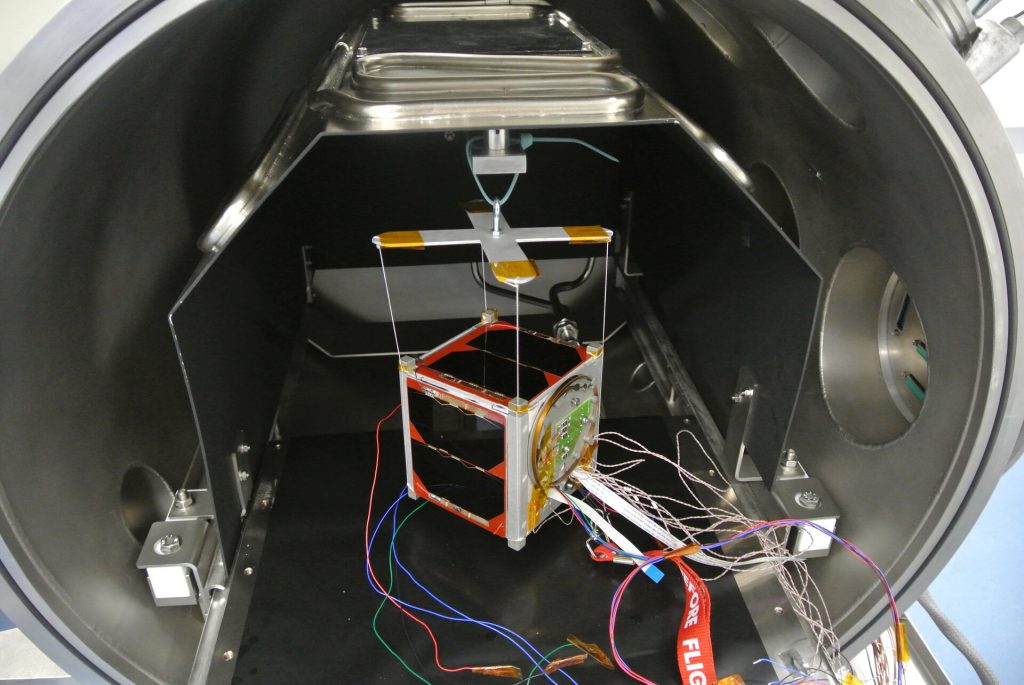CubeSat launches are increasing rapidly. They were initially used for educational purposes; however, over time, they were used for more complex missions requiring a precise attitude. To achieve precise control and preserve the mission attitude, disturbance torques must be compensated for. This is the focus of Asia Kajo’s PhD research under supervision of Prof Herman Steyn’s Department of Electrical and Electronic Engineering at Stellenbosch University.
The research entitled Estimation of External Disturbance Torques on CubeSat Satellites to Enhance Full State Attitude Estimate Accuracy and Mission Success focuses on accurately estimating and developing models for disturbance torques that considerably improve the full-state estimate accuracy, Cube Satellite control, and mission success. The research aims to improve the accuracy of the satellite’s full state estimation and reduce the percentage of mission failures by estimating attitude disturbance torques in Low Earth Orbit (LEO).
External Disturbance Torques
External disturbance torques on Low Earth Orbit (LEO) satellites are considered one of the most significant challenges to address for high-performance attitude control of small satellites. These disturbances represent a harsh environment for the successful operation of a satellite mission.
These torques can come from various sources such as gravity-gradient, aerodynamic drag, solar radiation pressure, and magnetic fields. In the case of CubeSats, which are small satellites used for various purposes such as scientific research and Earth observation, external disturbance torques can significantly impact their performance.
The main objective of Dr Kajo’s research is to estimate the disturbance torques utilising several linear and nonlinear estimation techniques, such as Linear Least Square (WLS), Kalman Filter (KF), Extended Kalman Filter (EKF), and the Unscented Kalman Filter (UKF).

What are some use cases for CubeSats?
CubeSat satellites are used for a wide range of applications, from scientific research to commercial and military purposes, such as:
- Earth observation: CubeSats can be used for remote sensing and observing the Earth’s surface, weather patterns, atmospheric conditions, and more.
- Communications: CubeSats can provide low-cost communication services for remote areas or disaster-stricken regions where traditional infrastructure is unavailable or damaged.
- Scientific research: CubeSats are ideal for conducting scientific experiments in space due to their compact size and low cost. They can be used to study phenomena such as radiation levels, microgravity effects, and more.
- Technology demonstration: CubeSats can serve as platforms for testing new technologies in space, such as propulsion systems, solar panels, sensors, and more.
- Education: CubeSats provide a hands-on learning experience for students interested in space technology and engineering.
Overall, CubeSats offer a unique opportunity to conduct space missions that would otherwise be too expensive or impractical.
Final Thoughts
Dr Kajo is currently a Researcher-Head in Aerospace Engineering Department. Her research areas are space engineering and electronic engineering, focusing on small satellites (CubeSats), specifically Attitude Determination and Control Subsystems (ADCS).
Further reading: A. S. K. Habila and W. H. Steyn, “In-orbit Estimation of the Slow Varying Residual Magnetic Moment and Magnetic Moment Induced by the Solar Cells on CubeSat Satellites,” 2020 International Conference on Computer, Control, Electrical, and Electronics Engineering (ICCCEEE), Khartoum, Sudan, 2021, pp. 1-6, doi: 10.1109/ICCCEEE49695.2021.9429618.





